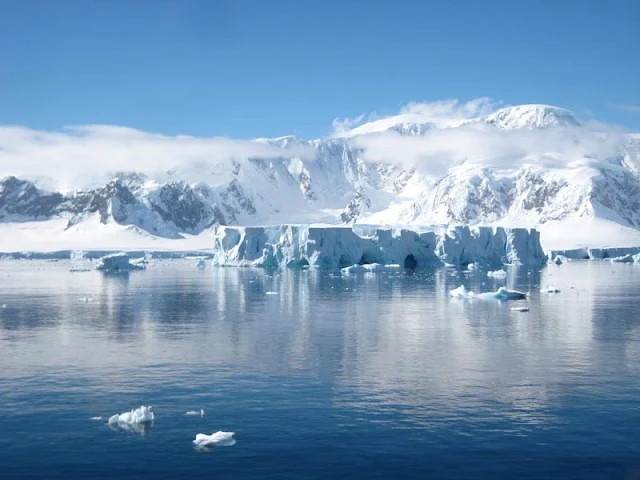A New York Times web story is less about news than a feature about on-the-ground findings in Greenland, worth a look if only for the spectacular video banner and other graphics. They're so big in fact that I'm unable to navigate past them. The conclusion though is that on site research is showing previously unknown mechanisms for melting, suggesting the situation is even worse than previously believed.
The major news concerns the Antarctic. "It may be the biggest climate change story of the last two years," the Washington Post story begins:
In 2014, several research groups suggested that the oceanfront glaciers in the Amundsen Sea region of West Antarctica may have reached a point of “unstoppable” retreat due to warm ocean waters melting them from below. There’s a great deal at stake — West Antarctica is estimated to contain enough ice to raise global sea levels by 3.3 meters, or well over 10 feet, were it all to melt.
The urgency may now increase further in light of just published research suggesting that destabilization of the Amundsen sea’s glaciers would indeed undermine the entirety of West Antarctica, as has long been feared.
Using a new climate model (and the knowledge of how melting works gained by research in Greenland and other places) a study concludes: "if the Amundsen Sea Sector is destabilized, then the entire marine part of West Antarctica will be discharged into the ocean.”
This would result in massive sea level rises, though probably over a very long time period before they reach maximum. But the article is careful to note that more on site research must be done to confirm these findings, and there are major uncertainties that affect the time frame. Some scientists fear that serious effects will be felt much sooner.
This story followed by a day the stories about a NASA study that found that ice is currently being added to the Antarctic that outweighs the losses to glacier melting. This study was immediately exploited by the usual suspects as evidence that global heating isn't happening after all, but that's not the conclusion the NASA scientists draw.
The study found that a long-term trend that increased snowfall in parts of the Antarctic was still adding ice, so that technically the continent does not have less ice than before. But it's a race between the melting and the ice created by snow, and pretty soon, the melting will likely be winning:
But it might only take a few decades for Antarctica's growth to reverse, according to Zwally. "If the losses of the Antarctic Peninsula and parts of West Antarctica continue to increase at the same rate they've been increasing for the last two decades, the losses will catch up with the long-term gain in East Antarctica in 20 or 30 years - I don't think there will be enough snowfall increase to offset these losses."













No comments:
Post a Comment